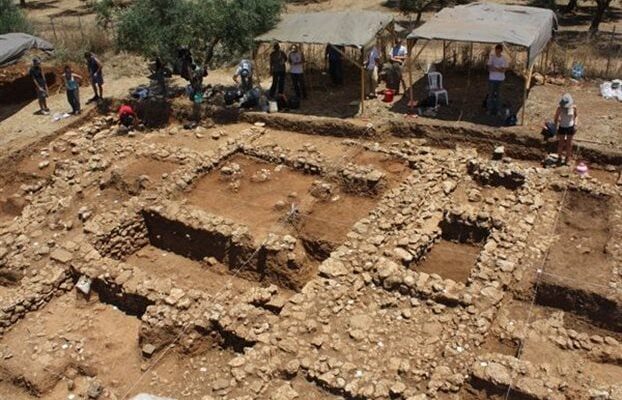The little-known site, Iklaina, on the Peloponnesian peninsula was a major center of Mycenaean culture; findings now indicate that it was the very first city-state in ancient Greece.
Iklaina marks the transition from a world without organized states to a world where the state is the dominant political institution. In the city-state located in todays’ Messenia prefecture, archaeologists have discovered the oldest written text in Europe on a tablet made of clay.
Situated at a strategic location overlooking the Ionian Sea, Iklaina appears to have been an important capital city of the Late Bronze Age (ca. 1600-1100 BC) that became famous for such mythical sagas as the Trojan War.
Iklaina may be the first city state in ancient Greece
An open-air pagan sanctuary, an early Mycenaean palace, giant terrace walls, murals, an advanced drainage system, and a clay tablet from between 1450 and 1350 BC featuring an early example of Linear B writing have reinforced the view that this ancient Greek town was one of the earliest complex states in ancient Greece by hundreds of years, if not the first.
The massive buildings that have been unearthed apparently served as administrative centers, and the clay tablet is the earliest-known governmental record in Europe.
Iklaina apparently had a centralized political administration, a complex organized society, and an advanced economic organization.
Until very recently, the earliest complex state in ancient Greece had been thought to have arisen around 3,100 years ago; however, the evidence from Iklaina indicates that the complex states were taking form as long as 3,400 years ago.
Archaeologists and historians believe that Iklaina was ultimately vanquished by its great rival, the famed Mycenae.
It was destroyed by enemy attack at the same time that the Palace of Nestor expanded, most likely indicating that it was the ruler of the Palace of Nestor who took over Iklaina.
Mycenaean civilization
The ancient Mycenaeans ruled mainland Greece and the Aegean Sea from 1,600 BC to 1,200 BC.
Mycenae, the kingdom of the mythical king Agamemnon, is the most important and richest palatial center of the Late Bronze Age in Greece.
Myths related to its history, from the Homeric epics to the great tragedies of the Classical period, have inspired poets and writers over many centuries.
For several centuries, mainland Greeks appeared to imitate the Minoans. Pylos, an early Mycenaean power center, had buildings that resembled the large houses with ashlar masonry found at Knossos, Crete.
The mansions had painted walls, a type of artistry pioneered by the Minoans.
For a certain time period, the Mycenaeans imported Minoan luxury goods and incorporated Minoan symbols, such as the bull, into their own art.
Wealthy Mycenaeans were buried with Minoan luxury goods while other graves included locally produced Mycenaean objects, such as painted pottery, that were copies of Minoan originals.
The Mycenaeans also adapted the Minoan script, called Linear A, for their own use. This adapted script is now called Linear B.



